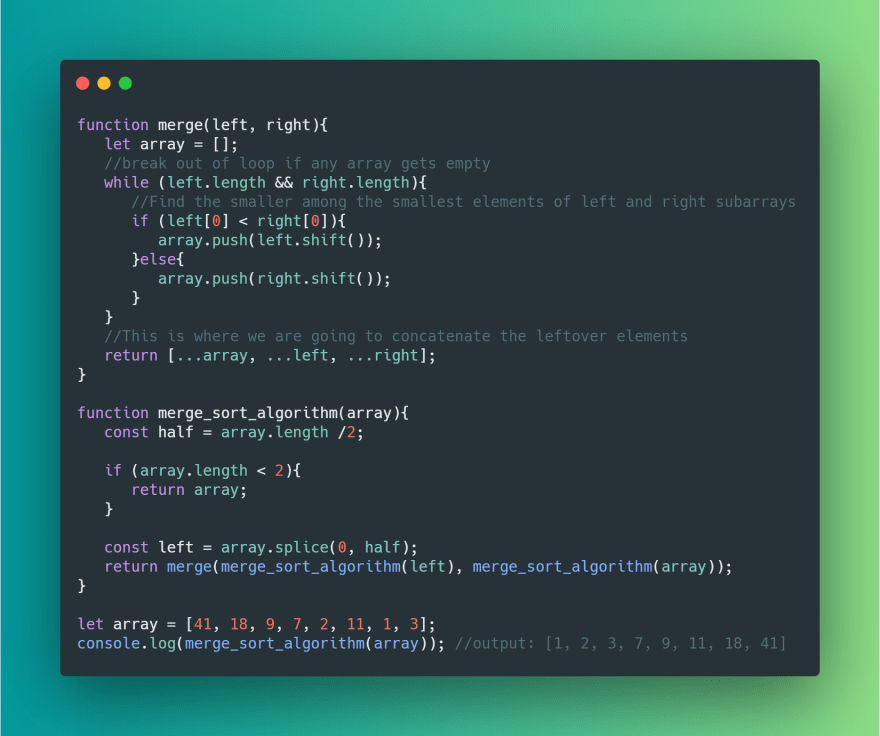Table Of Contents
* 🤓 INTRODUCTION
* 👉🏻 ABOUT MERGE SORT ALGORITHM
* 👨🏻🏫 EXPLANATION
* 👀 VISUAL EXAMPLE
* 🛠 IMPLEMENTATION
* 👩🏻💻 CODE
* 🤔 COMPLEXITY
* 🙏 THANK YOU
🤓 INTRODUCTION
Welcome, hackers! I hope you are all having a great weekend.🚀Before we start another work week tomorrow, let's learn something new. In this blog article, we are going to explain and implement the Merge Sort algorithm.
👉🏻 ABOUT MERGE SORT ALGORITHM
Merge sort algorithm is another divide-and-conquer algorithm based on the idea of breaking down a list into several sub-lists until each sublist consists of a single element and merging those sublists in a manner that results in a sorted list.
Let's take a generic array that starts at index p and going through index r. It will be convenient to have a notation for a subarray, array[p..r]; In terms of our notation, for an array of n elements, we can say that the original problem is to sort an array A[0..n-1];
👨🏻🏫 EXPLANATION
Here is how merge sort uses divide-and-conquer:
Divide - by finding the number q of the position midway between p and r. Do this step the same way we found the midpoint in binary search: add p and r, divide by 2, and round down.
Conquer - by recursively sorting the subarray in each of the two subproblems created by the divide step. That is, recursively sort the subarray array[p..q] and recursively sort the subarray array[q+1..r];
Combine - by merging the two sorted subarrays back into the single sorted subarray array[p..r];
👀 VISUAL EXAMPLE
Steps:
0: Array [14, 7, 3, 12, 9, 11, 6, 2] is unsorted
1: Find q (q = (p+r)/2) q=3 in our case
2: We divide into two subarrays [14, 7, 3, 12] - up to the index of q - And [9, 11, 6, 2]
3: Find q again in this case for each of the subarray
The first subarray q index is 1 and for the second q=5
4: We divide into the following subarrays:
[14, 7] and [3, 12] for the first subarray and [9, 11] and
[6,2] for the second subarray.
...Repeating these steps until we have only single values as an array member. We have to make two recursive calls in the conquer step.
🛠 IMPLEMENTATION
👨🏻💻 CODE
Play with the code!
🤔 COMPLEXITY
The complexity of the Merge sort algorithm is in the very best case Big O of nlog2n, in the worst case, the merge sort is staying consistent with the complexity of Big O of nlog2n.
The bad thing about the Merge sort algorithm is that requires an extra memory space the same size as the vector that is being sorted.
🙏 THANK YOU FOR READING!
References:
School notes...
School books...
Khan Academy
Please leave a comment, tell me about you, about your work, comment your thoughts, connect with me!
☕ SUPPORT ME AND KEEP ME FOCUSED!

Have a nice time hacking! 😊









Top comments (1)
Try to check your version of the algorithm on the array of 1 000 000 items at least. You would be surprised